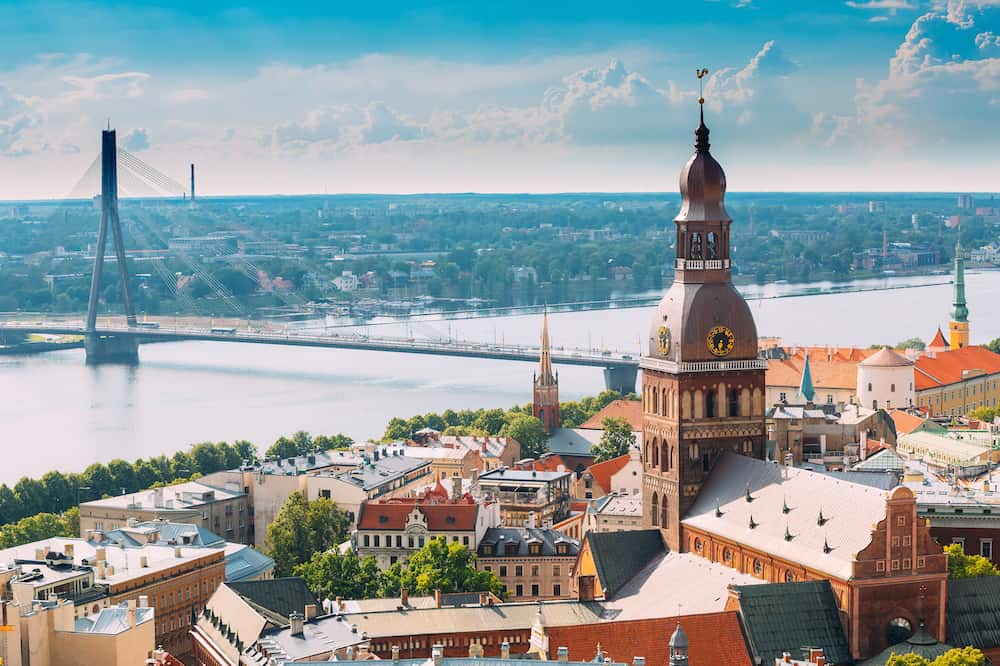21 Things to do in Riga
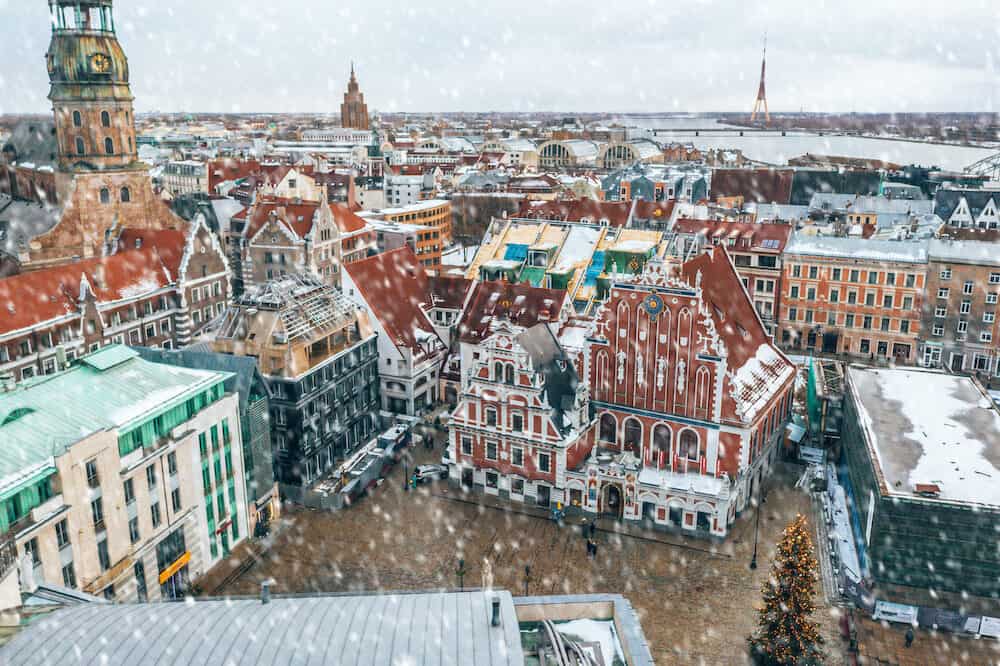
Though this may be the first time you’re reading about Riga, it certainly won’t be the last. The Latvian capital is an up-and-coming destination that’s about to be on every traveller’s radar.
Riga is the largest city in the Baltics and perhaps the most fascinating to visit, even drawing comparisons to Berlin. Best known for its vibrant Art Nouveau architecture, Riga also has a plethora of trendy, artistic quarters ready to ignite your creativity.
The lively pubs, contemporary eateries and bohemian boutiques combined with the charming cobblestone streets of the Old Town create a welcoming environment that won’t be easy to leave.
While there’s plenty going on in the city to keep you occupied, the scenic Latvian countryside isn’t far away either. Interested in learning what this Baltic treasure is all about? Here are 21 interesting and historic things to do in Riga, Latvia.
Plan your trip?
Avoid hidden fees in the exchange rate while withdrawing from millions of ATMs abroad, paying in restaurants and shops, and buying your accommodation and flights using the Wise Card. You can hold up to 40+ currencies at once to spend in in over 150 countries, and convert them in real time with the free Wise app.
Need help planning your trip from start to finish? Check out these helpful links:
- Cheap flights
- Savings on accommodation from hostels to luxury hotels
- Affordable car rental options
- Affordable sightseeing tours and day trips
- Travel Adapter – All in one so you don’t have to carry a bunch around
- Don’t be silly and forget Travel Insurance! Get hurt and you’ll regret it…
This post contains some affiliate links for your convenience. Click here to read my full disclosure policy. You can also read our content/editorial policy here.
Old Town
Introduce yourself to Riga on foot with a private walking tour of the Old Town. It’s always a great idea to begin your first day in a new city with a quick walking tour, as you can make a note of any attractions you want to dedicate more time to later on.
With easy pick-up and drop-off from your accommodation, wander the charming cobblestone streets with your guide and see some of the top sites in under two hours.
You’ll pass through both Dome Square and Town Hall Square, two must-sees in Riga, while hearing some interesting stories and facts about the city.
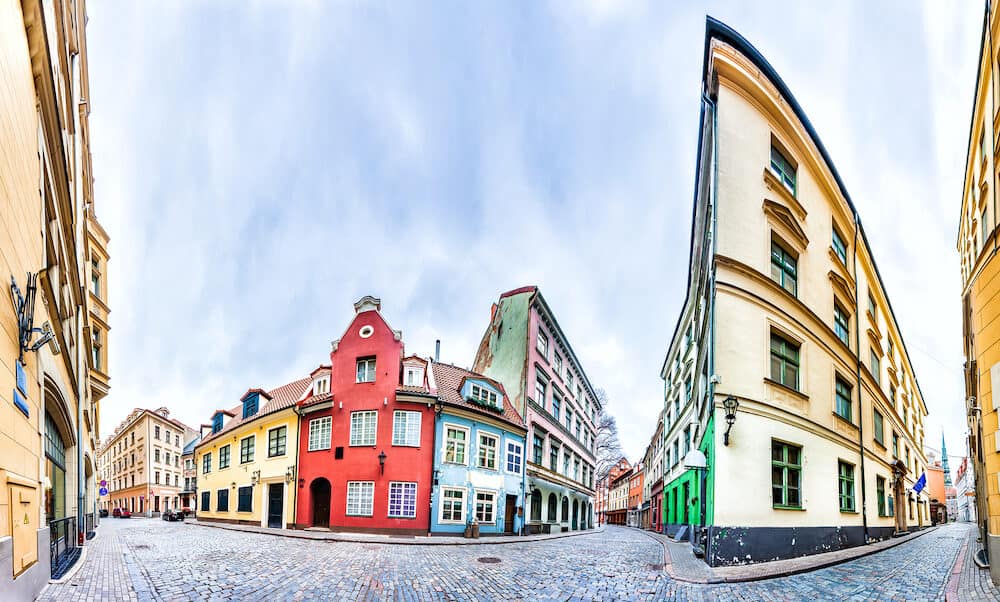
House of the Blackheads
One of Riga’s most notorious landmarks is the House of the Blackheads, located in the heart of the Old Town. Though the original building from the 1330s was unfortunately destroyed during World War II, it was rebuilt completely between 1996 and 1999.
It was initially used as a guild for the Brotherhood of Blackheads, a group of unmarried merchants, ship owners and foreigners.
Take a guided tour and marvel at the opulent crystal chandeliers, silverware collections, painted ceilings, colourful stained glass ornamentation, portraits of nobility and the Blackheads’ Coat of Arms. You can see more items belonging to the Brotherhood, as well as the treasures of the Medieval cellar.
Stop by any day between 10 a.m. and 6 p.m. You’ll also want to spend some time admiring the elegant Baroque facade.
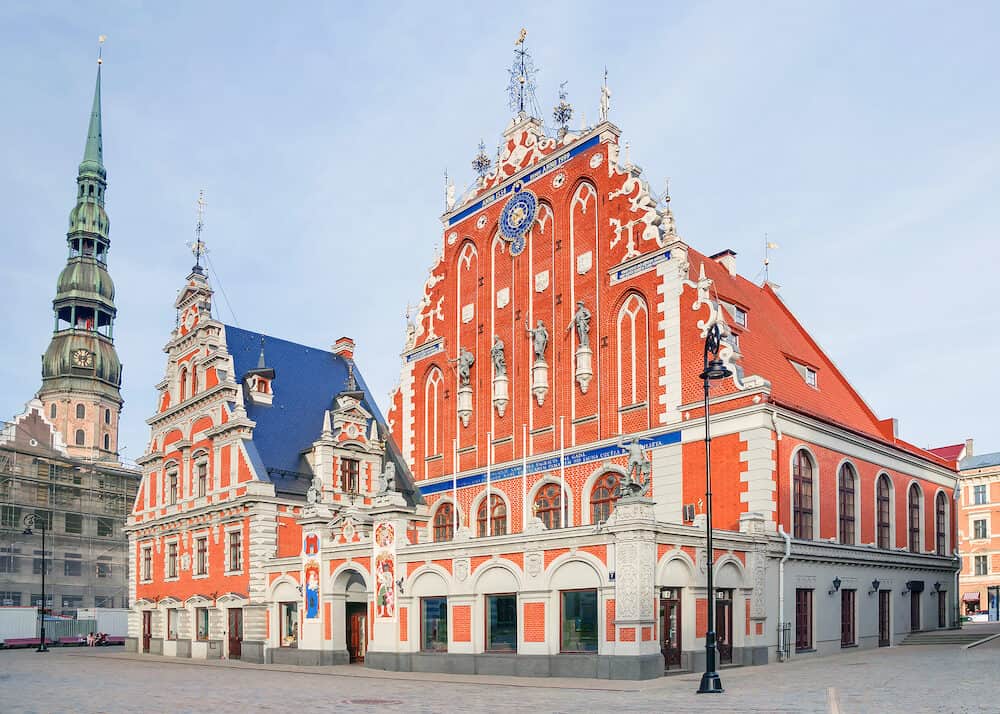
Riga Central Market
Who knew that the largest market in Europe is here in Riga, Latvia? Luckily, you’ll get the opportunity to visit the Riga Central Market during your trip. On average, between 80,000 to 100,000 people shop here for their fruits, veggies and meats each day!
The early 20th-century structure consists of five Neoclassic and Art Deco pavilions made from old German Zeppelin hangars. The market takes up over 72,000 square metres and holds 3,000 or so stalls. Along with the Old Town area, the market is listed as a UNESCO World Heritage Site.
The bustling market has a separate food court too, known as the Central Gastro Market. Come here to eat a range of tasty cuisines all in one place, including burgers, fish and chips, falafel, ramen, sushi and pancakes. Wash down your street-food-style dish of choice with a cold craft beer.
While the main market is open between 7 a.m. and 6 p.m. daily (closing an hour early on Sunday), the gastro market has its own hours. Expand your culinary horizons from 11 a.m. until 9 p.m. from Sunday to Thursday and 11 p.m. on Friday and Saturday.
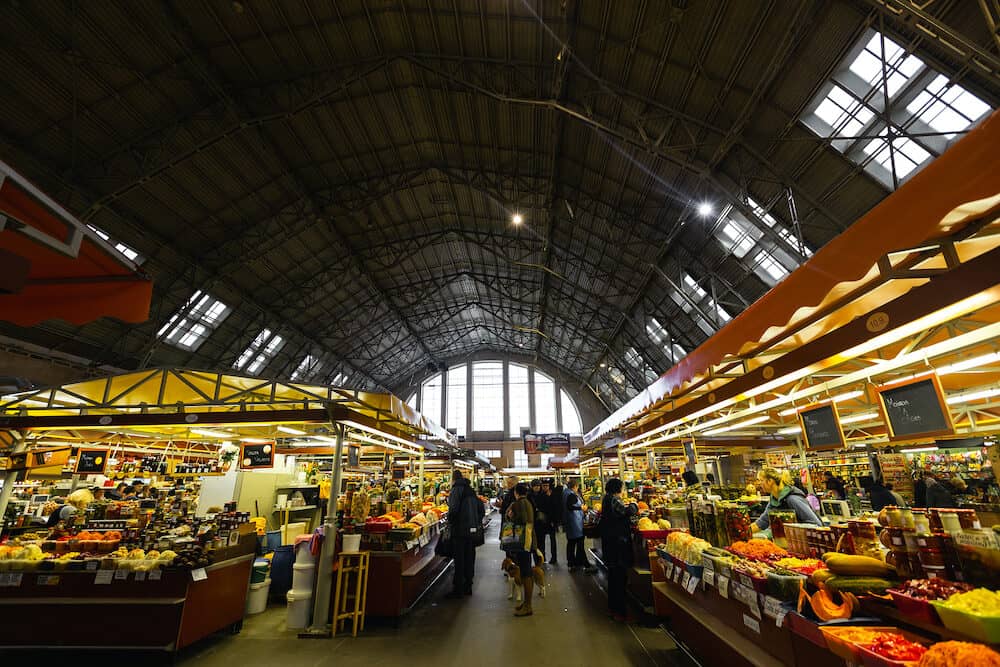
St Peter’s Church
St Peter’s Church is a fascinating Brick Gothic, Romanesque and Baroque parish church and the tallest religious building in Riga. Although building began during the beginning of the 13th century, additional periods of construction in the 15th and 17th centuries gave the church its unique mixture of architectural styles.
The 120-metre-high clock tower plays a Latvian folk song five times per day in addition to the hourly bell toll. Take the elevator to the second floor for a beautiful 360-degree panoramic view of Riga.
Inside, you can take a look at some of the original design elements like the wooden altar, as well as the more recent renovations. The €9 admission cost includes entrance to the church and tower, as well as any of the regular art exhibitions. It’s open from 10 a.m. until 6 p.m. from Tuesday to Saturday and between 12 p.m. and 6 p.m. on Sunday.
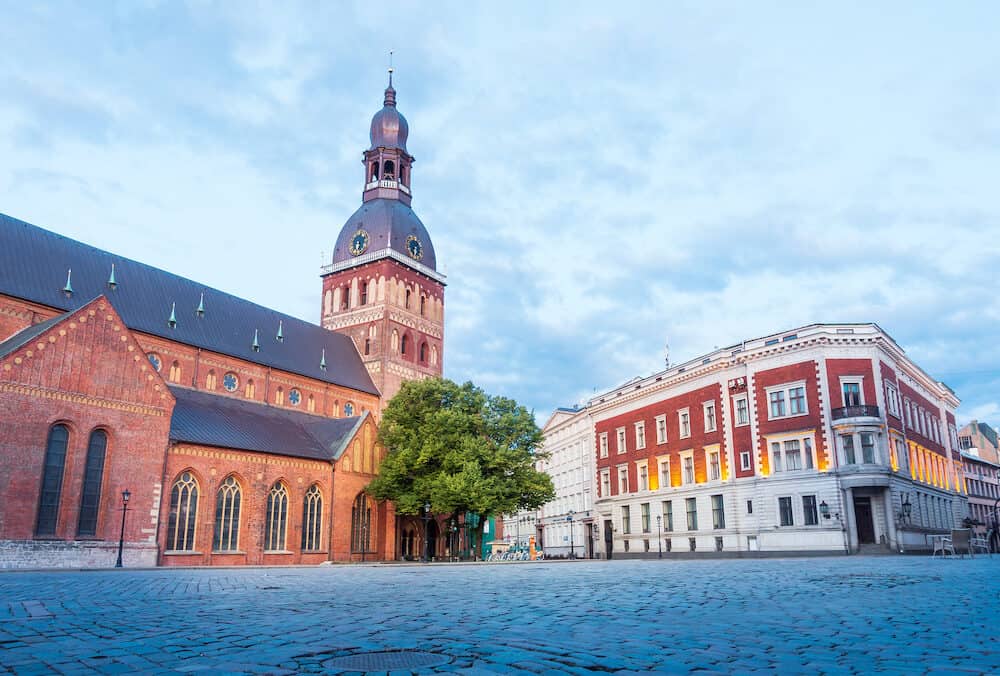
Freedom Monument
The Freedom Monument is a significant landmark in Riga and an architectural representation of freedom and liberation in Latvia.
The 42-metre-high memorial tower honours the soldiers who fought and lost their lives during the Latvian War of Independence between 1918 and 1920.
Made of granite, travertine and copper, the monument’s many sculptures depict scenes from Latvian culture and history. At the top is a statue of the Goddess of Liberty lifting three gilded stars to the sky.
The monument, known to locals as Milda, is along the Boulevard of Freedom in the Central District, close to the canal. It is guarded by soldiers during the day, who perform a small changeover ceremony every hour.
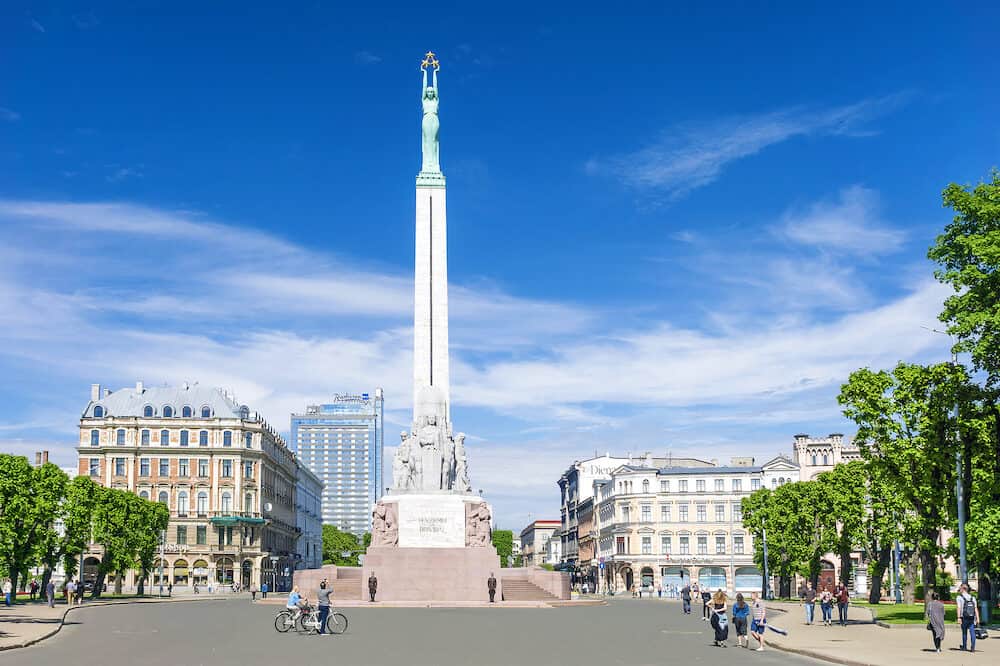
Three Brothers
The oldest remaining medieval houses in Riga are known as the Three Brothers. Interestingly, the stone dwellings on Maza Pils Street are all different ages and architectural styles.
The oldest ‘brother’ at 17 Maza Pils was built during the late 1400s and features Dutch Renaissance influences with Gothic decor. The structure consists of only one main room, as well as an attic.
19 Maza Pils, the middle brother, was built in the mid-1600s and is an example of Dutch Mannerist architecture. The Latvian Museum of Architecture is housed here, open from 9 a.m. on weekdays. Admission is free, so it’s worth having a look inside while you’re around.
The youngest brother at 21 Maza Pils is the smallest and narrowest, built in the 17th century. Yet, the pale pastel green facade allows it to stand out.
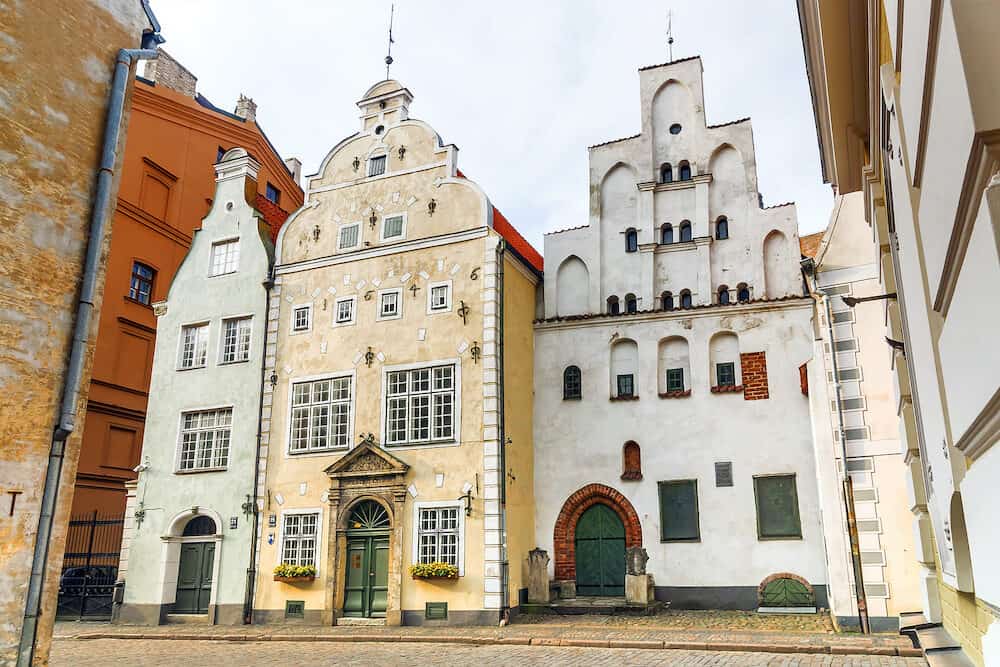
Latvian National Opera
The Latvian National Opera and Ballet is an opulent Neoclassical theatre and arts venue built in 1863. If you’re not sure what to do in Riga at night, come by and see a performance for less than 10 euros.
Beginning in September, there are over 230 performances of six different productions. The season ends in June with the annual Riga Opera Festival.
If you don’t have time to see a show, a guided tour allows you a look inside.
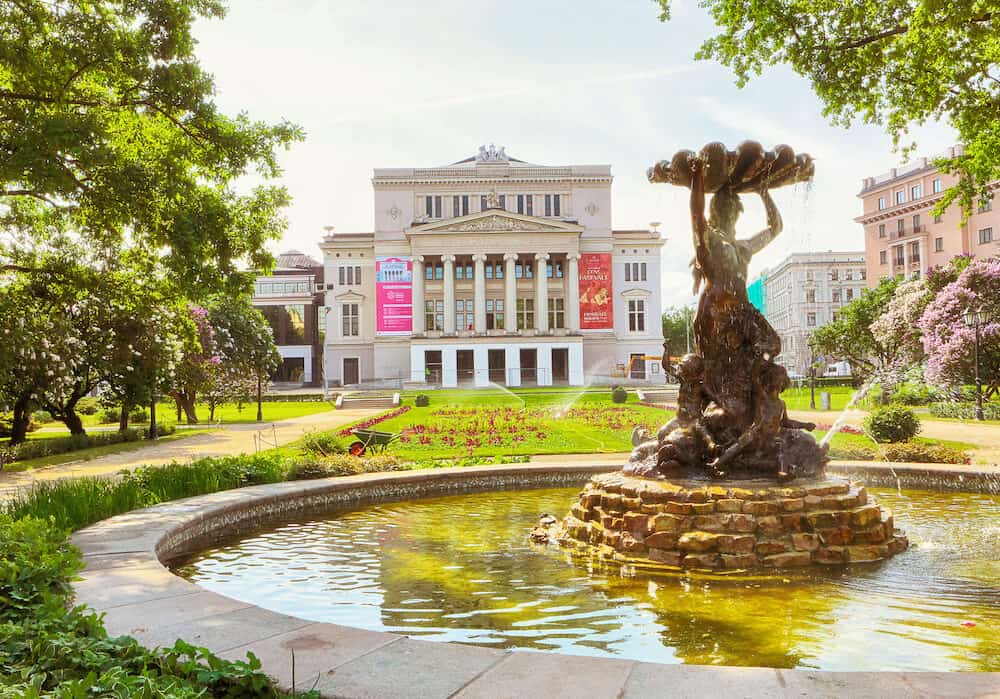
Swedish Gate
The Swedish Gate is one of the oldest remaining fortifications in Riga’s Old Town. Originally part of the Riga Wall, it was one of only a few entrances into the town at the end of the 17th century. Tourists seeking a genuine Old Town experience can come by and walk through.
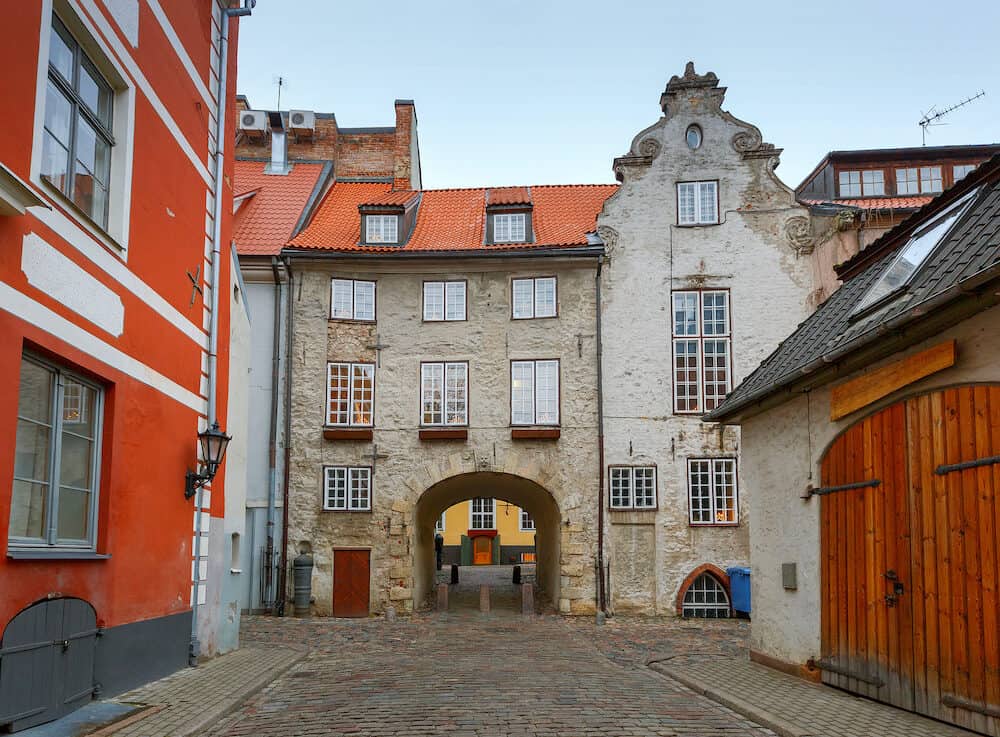
Cat House
Riga’s Cat House at 10 Meistaru Street is an early 20th-century building with both medieval and Art Nouveau elements.
The structure earns its name from the two angry-looking cat sculptures on the turret rooftops.
According to an old legend, the owner of the house held a grudge against the members of the Large Guild and wanted the cats to be placed facing away from the building across the street. However, the council ordered against this and the cats were turned to face the street.
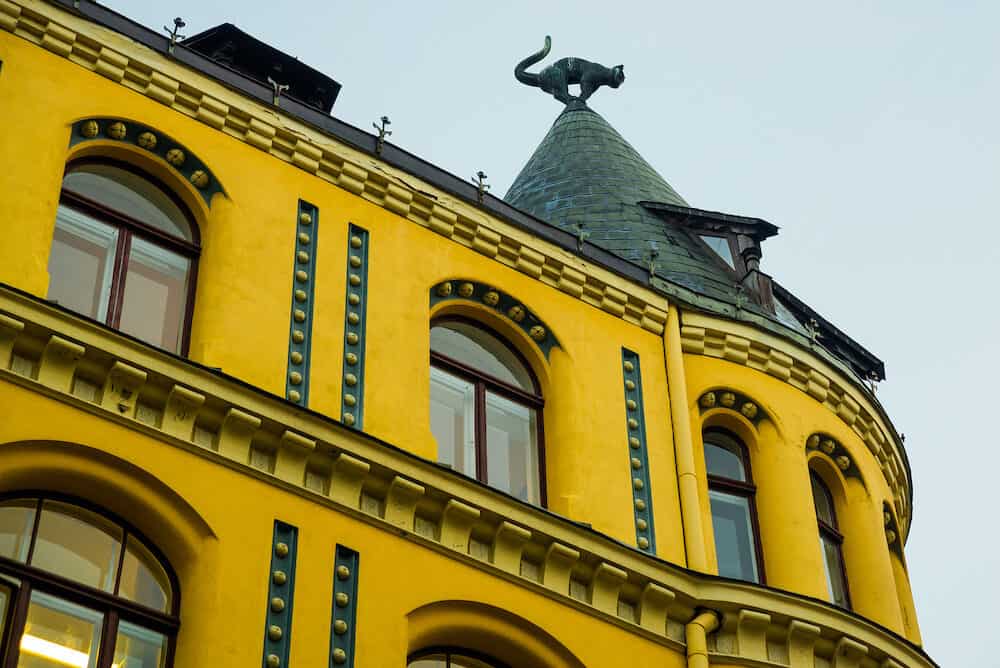
Albert Street
Albert Street is the ideal spot for an introduction to Riga’s iconic Art Nouveau architecture. Between 1901 to 1908, the short street was transformed thanks to architects Mikhail Eisenstein, Konstantīns Pēkšēns and Eižens Laube.
Located in the Old Town a short walk from Kronvalda Park, it’s somewhat of a hidden gem for those who don’t know about it.
Buildings 2a, 4 and 8 are particularly noteworthy, though you should wander at your own pace and see what catches your eye. Pay attention to the mythological figures and romantic nationalist motifs.
The Ethnographic Open-Air Museum of Latvia
A must-visit about 12 kilometres east of central Riga is the Ethnographic Open-Air Museum of Latvia. Hidden amongst pine trees by Lake Jugla, it is one of the largest and oldest open-air museums in Europe.
This is the only place in Latvia where you can see and learn about the different ways people once lived in various regions of the country. Many of the objects on display here were collected before the war and are therefore in wonderful condition.
Explore over 100 historical buildings from Latvia’s four provinces, all built between the 17th and early 20th centuries. Step into farmsteads and traditional dwellings, view everyday objects, and see historical decorations.
Get involved in traditional craft making and try your hand at pottery, basket weaving or forging coins. You can also take part in old-fashioned games and enjoy an authentic Latvian meal. Even more, you’ll get some fresh air while enjoying the beautiful scenery.
There are seasonal events and festivals held here throughout the year, so it’s definitely worth checking the calendar to see if something special will be happening during your trip.
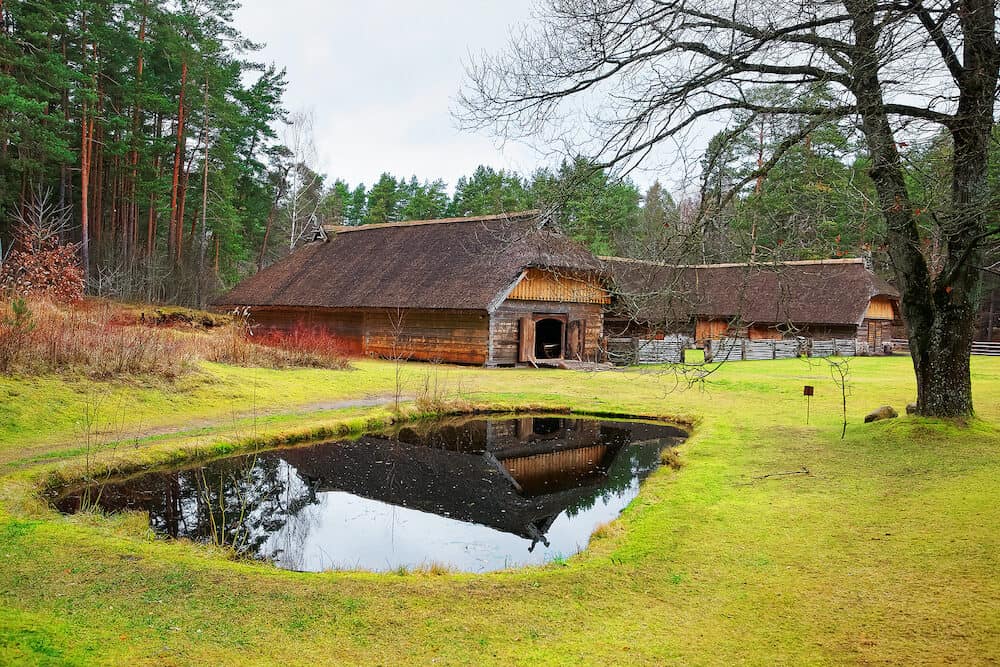
Nativity of Christ Cathedral
Riga’s Nativity of Christ Cathedral is the largest Orthodox church in the city and a marvellous architectural wonder. Its Neo-Byzantine style is unique for Latvia, designed by Russian and Baltic architects Nikolai Chagin and Robert Pflug and built between 1876 and 1883.
Although the cathedral miraculously survived both World War I and World War II, it was closed by Soviet officials in the early 1960s. Fortunately, restoration began in the late 1990s after Latvia regained its independence.
You can’t miss the cathedral’s golden central dome surrounded by smaller domes. Inside, the walls are covered with vibrantly-coloured Christian imagery and a large iconostasis stands by the main altar.
The cathedral is found within the Esplanade Park and is free to enter between 7 a.m. and 6:30 p.m. Unfortunately, photography isn’t permitted inside, regardless of how many other tourists you’ll see secretly snapping away.
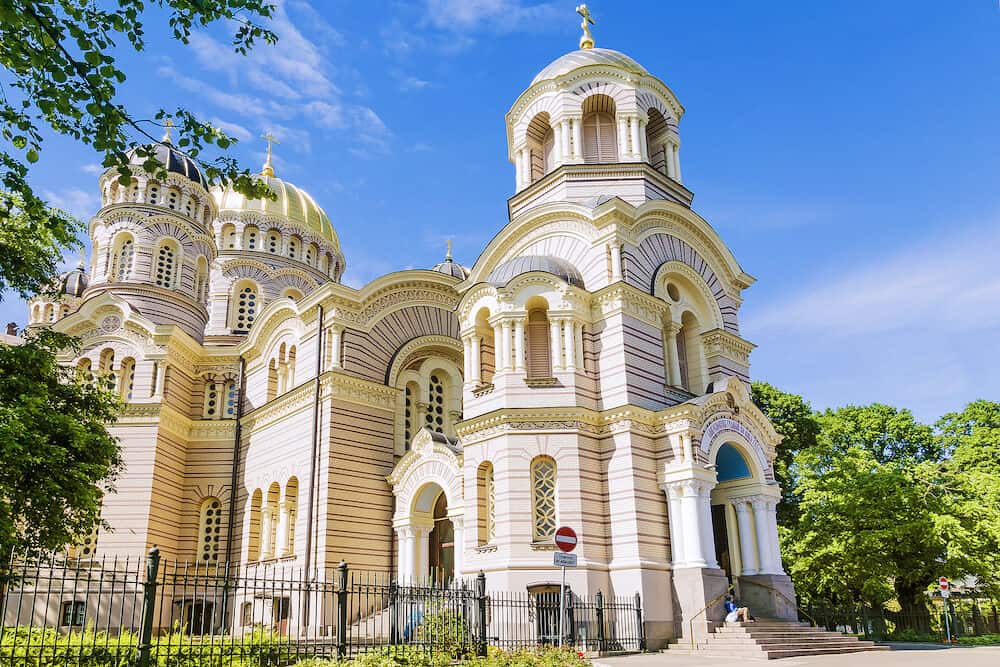
Latvian National Museum of Art
With over 52,000 works from the 18th century until the present, the Latvian National Museum of Art holds the largest collection of professional art in the country. When beginning your exploration of Riga museums, this is definitely the place to start.
Although the pieces here offer a comprehensive insight into the different styles and development of Latvian art, visitors are just as drawn to the renovated, modernised building, particularly the regal staircase.
You can easily spend a few hours looking around the permanent collection, plus any temporary exhibitions being held in the basement. Stop by any day except Monday and get to know the very best of Latvia’s modern art scene.
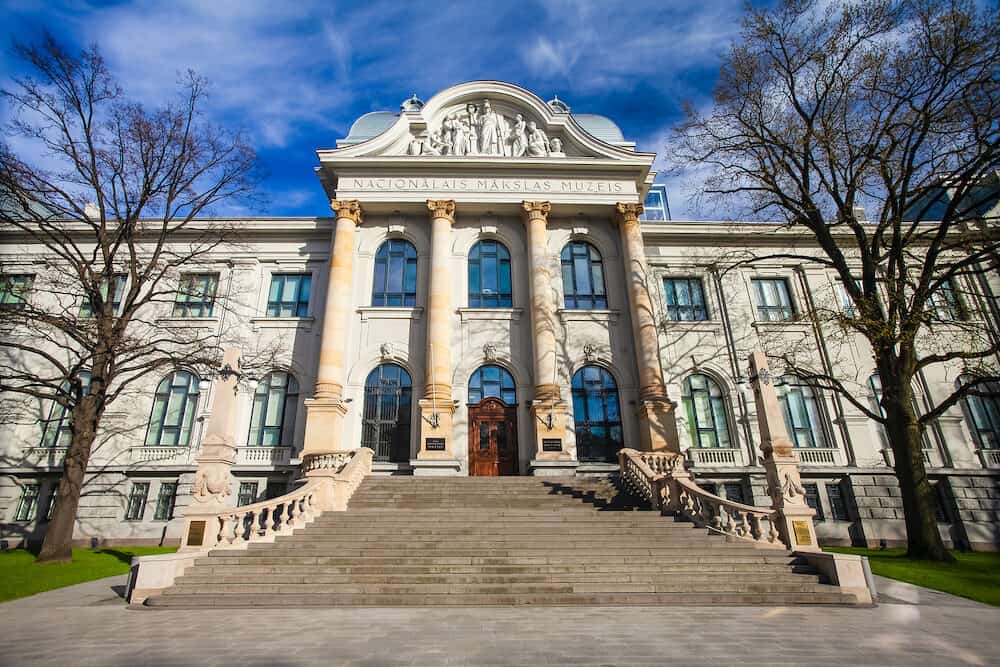
Riga Art Nouveau Museum
If you have time to dig deeper into the history of Riga’s Art Nouveau scene, stop by the only museum in the Baltics dedicated to this style of architecture.
The Riga Art Nouveau Museum is located within the former residence of Konstantīns Pēkšēns, one of Latvia’s most renowned Art Nouveau architects. Pēkšēns is responsible for designing over 250 of the incredible buildings in Riga.
This charming space includes original furnishings to authentically show how citizens of Riga lived 100 years ago. The spiral staircase is particularly mesmerising.
The museum is open from 10 a.m. until 6 p.m. every day except Monday, with an entrance cost of €9.
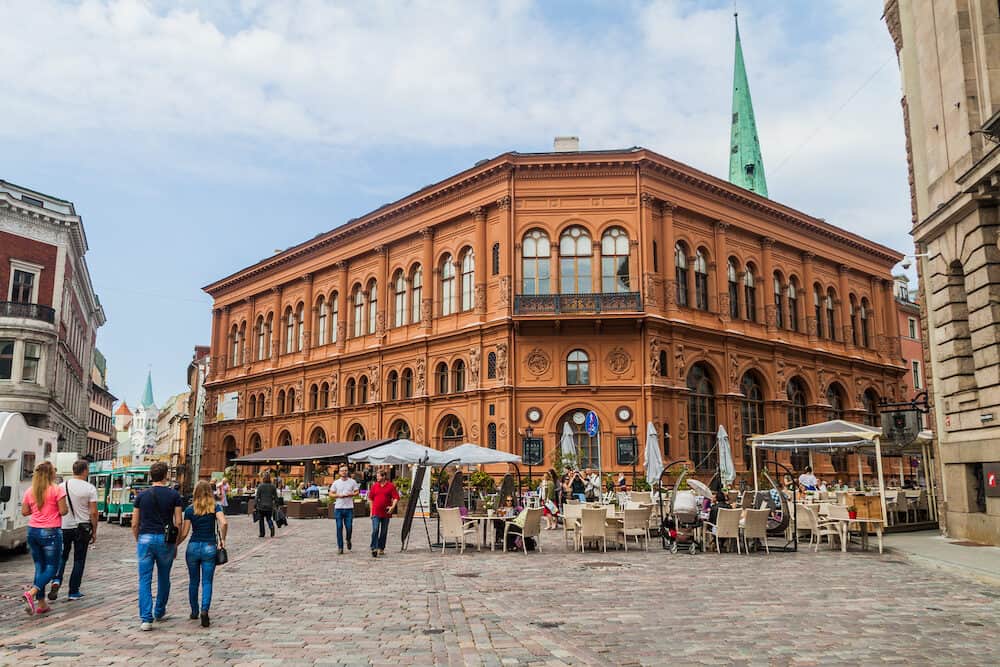
Black Magic Bar
Indulging in a drink or three at the Black Magic Bar is one of the best things to do in Riga at night. This former apothecary turned medieval bar has a dark and enchanting atmosphere, with a secret section of the bar you can enter through the bookshelf and down the staircase.
Black Magic is a wonderful spot to taste Riga Black Balsam, a traditional Latvian black liqueur made with a blend of 24 natural herbs and botanicals.
The balsam is most commonly used a mixer with vodka or in cocktails, though you can also try it in hot chocolate, coffee and tea. For an extra indulgent evening, order some chocolate truffles to accompany your Black Balsam concoction of choice.
Swing by anytime between 10 a.m. and 10 p.m. daily (or until 8 p.m. on Thursdays).
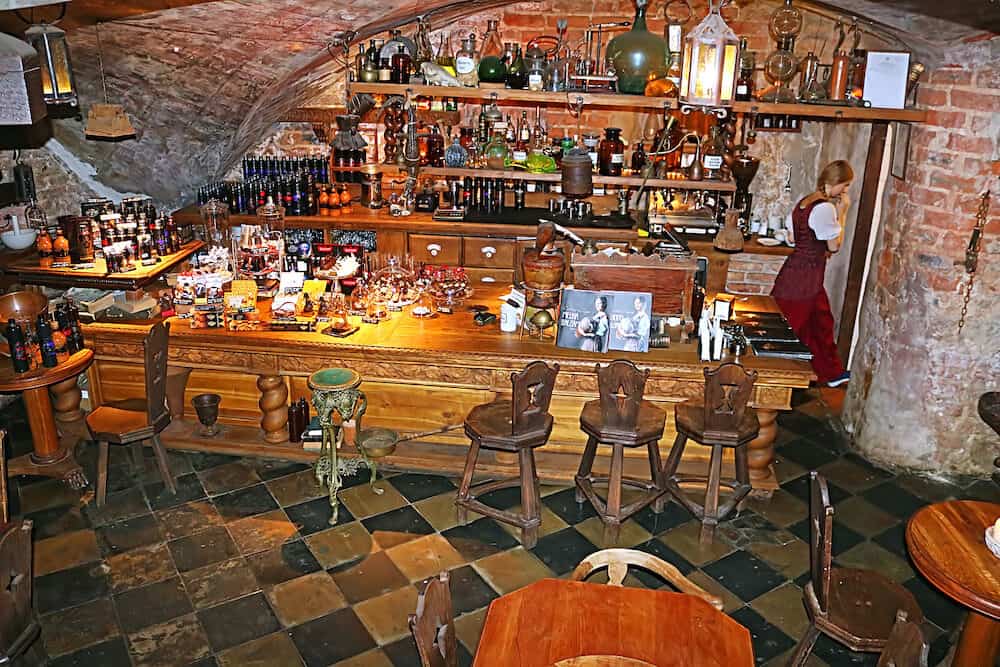
Riga Motor Museum
If you consider yourself a car enthusiast, a few hours at the Riga Motor Museum is an absolute must. Located in the neighbourhood of Mežciems, it holds the largest collection of antique vehicles in the Baltics.
Across three floors, you can see over 100 vintage cars from the roaring 20s up until the fall of the Soviet Union. The exhibitions are well arranged and you will learn some interesting facts about each vehicle, as well as their famous former owners.
The museum is open daily from 10 a.m. until 6 p.m. with the exception of certain public holidays. Entrance costs €10 per adult.
90-minute guided group tours for up to 25 people are available in English for an extra €35, or you can purchase a single audio guide for only €5.
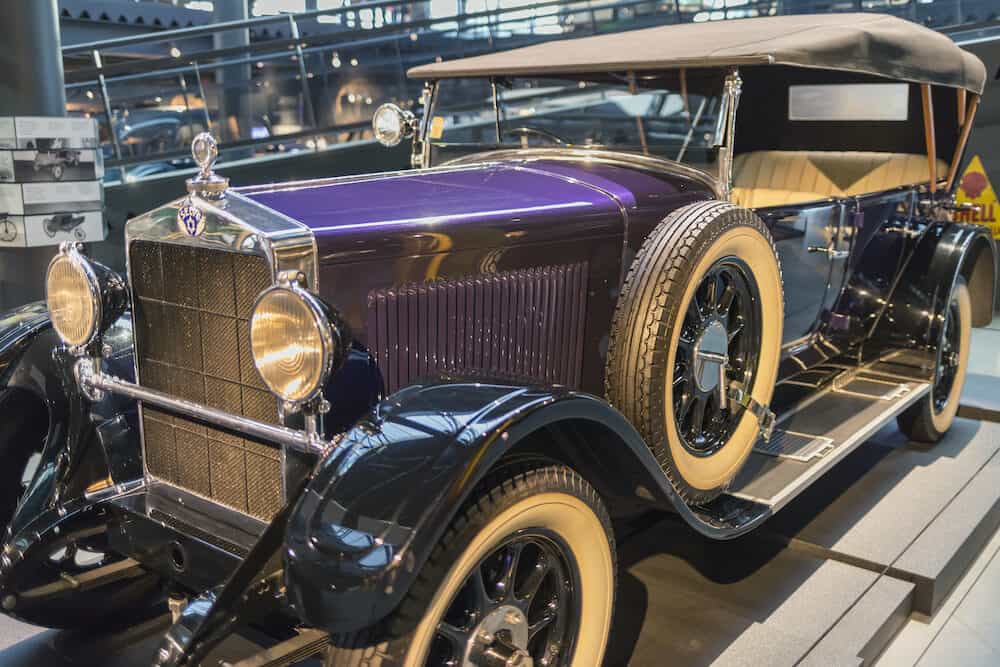
Riga Cathedral
One of Latvia’s most recognizable landmarks is Riga Cathedral. Considered the largest medieval church in the Baltics, it has undergone numerous changes since it was built in 1211.
As a result of these modifications over the centuries, the architecture is an eclectic mix of Brick Gothic, Romanesque, Baroque and Art Nouveau styles.
Atop the spire sits a golden rooster weathervane, and the 13th-century cloistered courtyard displays historic artifacts like cannons, tomb plates and decorative stone elements.
Regular music performances are held inside too, and the organ is sure to be playing while you’re here. Enter the church any day between 10 a.m. and 5 p.m. for €3.
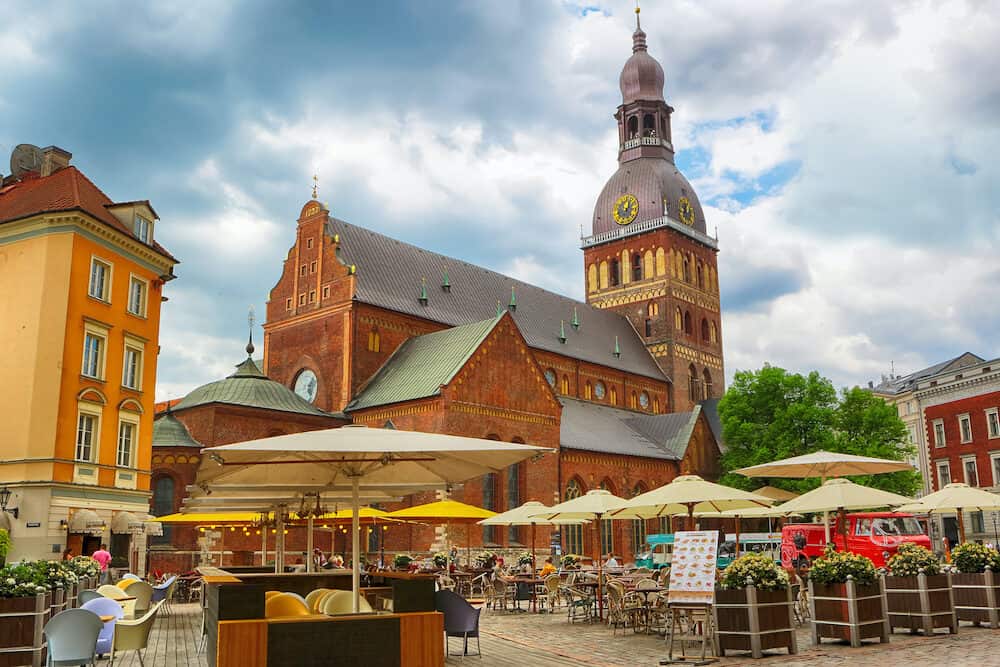
Vermane Garden
One of Riga’s oldest and most loved public parks is Vermane Garden, opposite the main University of Latvia building. Throughout this beautiful outdoor space are a few sculptures to take notice of, including the four seasons fountain.
Enjoy a picnic lunch on the grass, read a book, watch (or join) the locals playing chess or listen to a free concert at the open-air amphitheatre. On the east side of the garden is the charming Apsara Tea House, where you can stop for a cuppa.
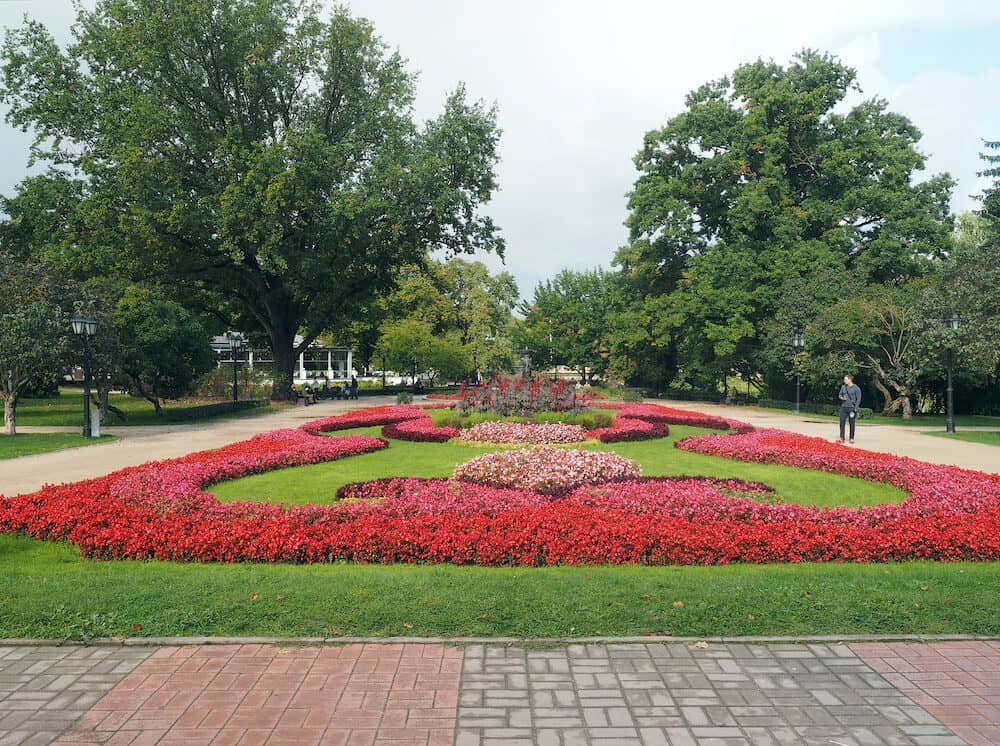
Riga Porcelain Museum
The Riga Porcelain Museum is a cosy ceramics exhibition space in the Old Town’s Convent Yard. The museum regularly showcases colourful, contemporary works by Latvian porcelain artists.
Those with an eye for opulence and a love of fine china will appreciate the displays. The friendly staff are available to answer any questions you may have about the pieces.
There’s even a small porcelain workshop, where you can purchase a premade bowl or plate and paint it yourself. Come and take a look between 11 a.m. and 6 p.m. from Tuesday to Sunday.
St Gertrude Old Church
Another magnificent church to stop and admire is the St Gertrude Old Church. Overlooking Gertrude Street since 1869, the red brick Neo-Gothic wonder is topped by a green copper spire and features decorate concrete ornaments all the way up.
The church has limited opening hours and is closed completely on Friday and Saturday, but you can always appreciate the architecture from the outside.
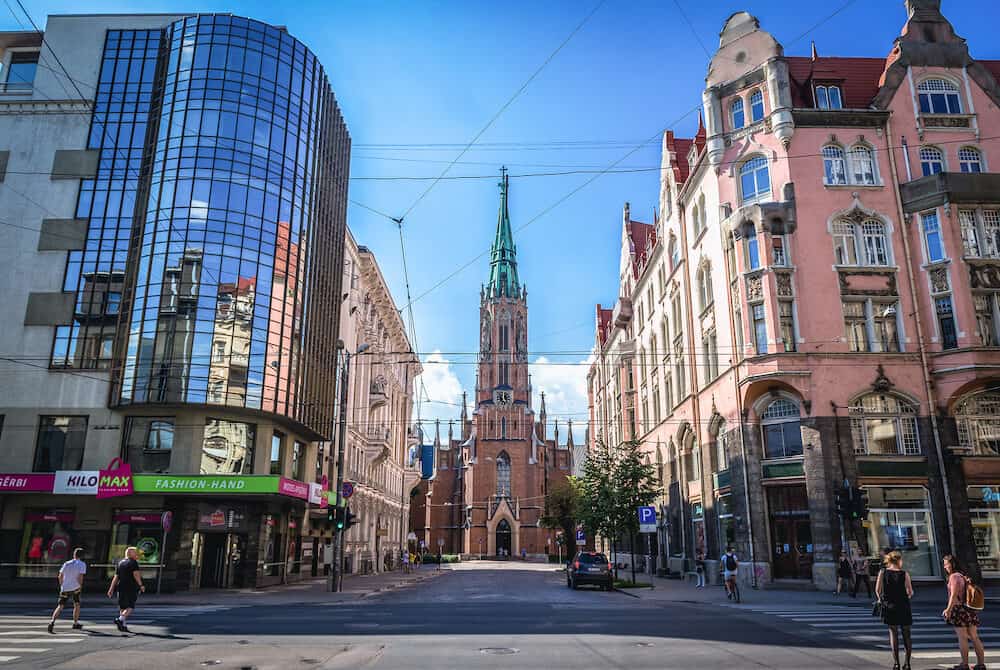
Gauja National Park
Get out of the city for the day and make your way to Gauja National Park, the largest national park in Latvia. It was established in 1973 to protect the old valley and promote natural tourism and sustainability.
Named after the Gauja River flowing through the park, the area is known for its varied terrains and landscapes, including sandstone cliffs and rocky outcrops dating back to the Devonian period.
Gauja National Park is home to 900 species of plants, as well as 150 bird species and almost 50 mammal species. There are also over 500 historic and artistic monuments scattered amongst the forests, from stone castles and manors to smaller archaeological statues and objects.
Fortunately, this fascinating and scenic oasis is only an hour away from central Riga by car, and there are enjoyable activities here no matter the season. Go cycling and hiking during autumn, downhill skiing in winter, boating and hot air ballooning in the springtime, and bungee jumping throughout summer.
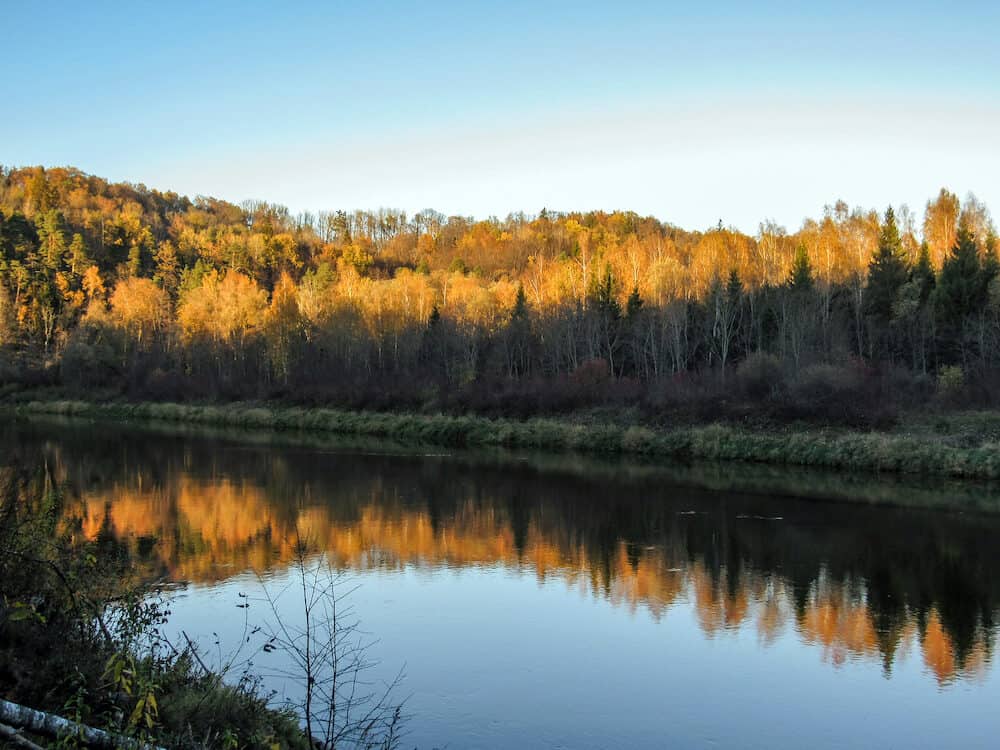
Recommended tours in Riga
- Best of Riga Walking Tour – Highlights and Hidden Gems
- Old Town Walking Tour of Riga
- Half-Day Private Trip to Sigulda and Turaida from Riga
- Full-Day Private Trip to Jurmala, Fisherman Villages and Nature Trails from Riga
- Small-Group Latvian Food Experience at Riga Central Market
- Riga Daily Bike Tour
- Enjoy Beautiful Art Nouveau Architecture in Riga – Private Tour With Local
- Private day trip to Rundale Palace, Hill of Crosses &more with Premium class van
- The Bank Job Escape Game in Riga
- Full-Day Private Trip to Latvia Palaces and Medieval Castle from Riga
- Red Buses Riga Hop-On Hop-Off Bus
- Hot Air Balloon Flight Over Sigulda National Park
If you’d like to save it for later, please save it to Pinterest.
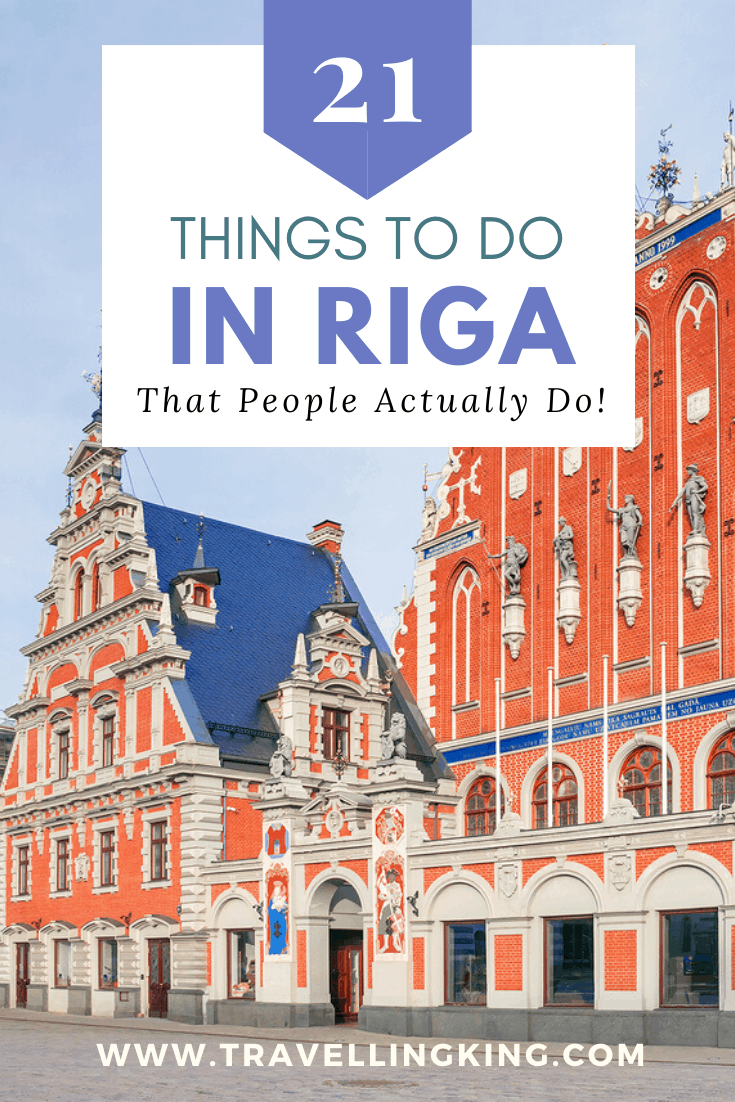
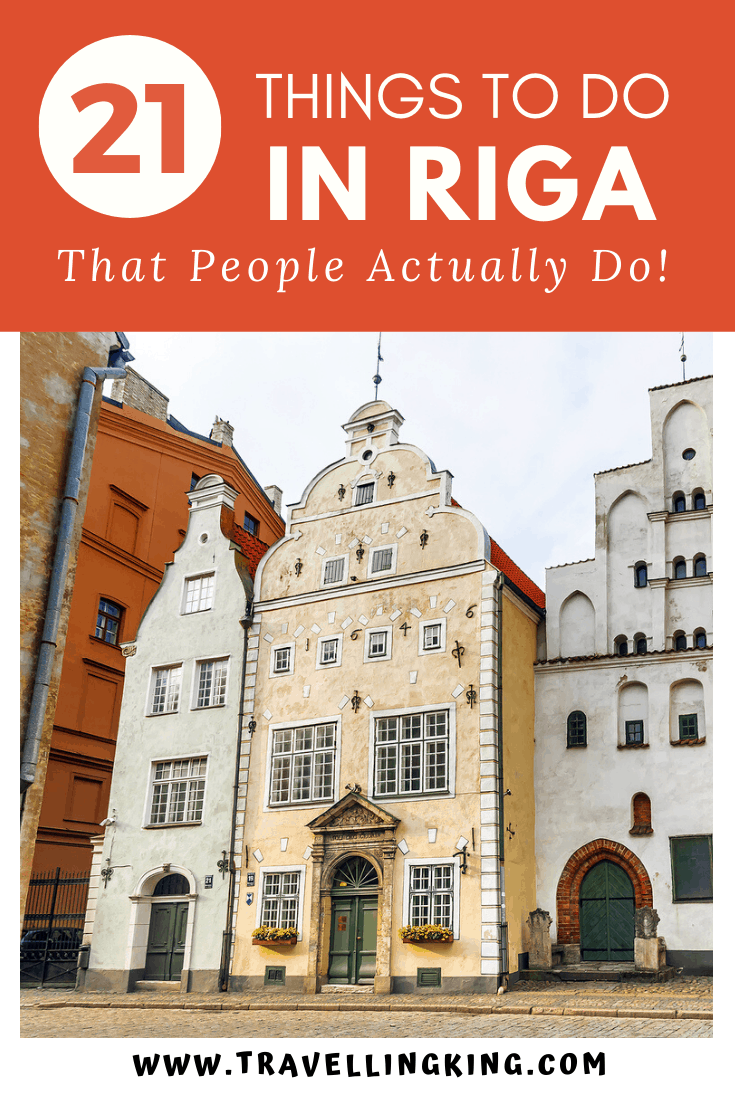


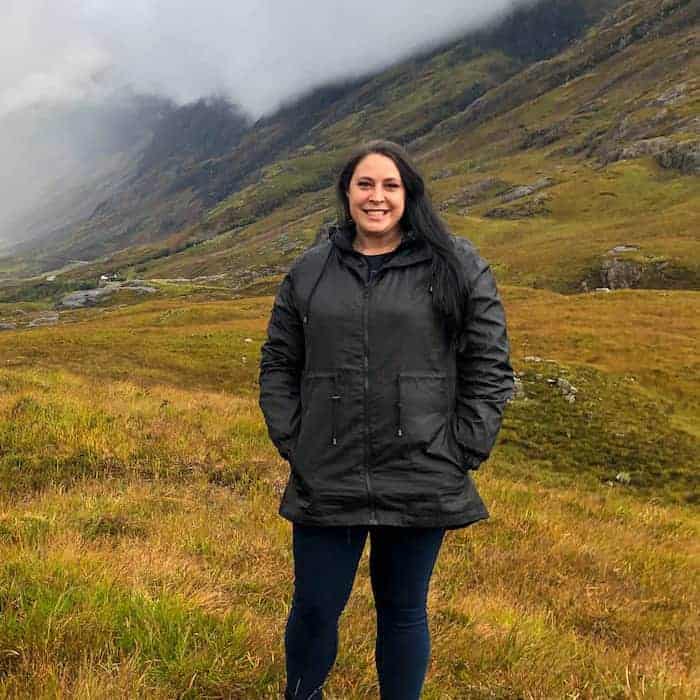
![Where to stay in Riga [Best Places to Stay for 2024]](https://www.travellingking.com/wp-content/uploads/2018/11/Riga-Latvia3.jpg)
